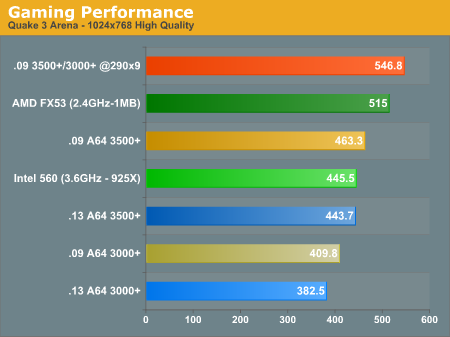Nemesis11
Power Member
90nm Athlon 64 draws less power and runs cooler than 130nm equivalent

http://www.techreport.com/onearticle.x/7417

As you can see, our die-shrunk Athlon 64 came out looking pretty darned good. Of course, every chip is a little different, but these differences are probably substantial enough to suggest that AMD's 90nm Athlon 64s should generally consume less power than their 130nm counterparts.
I also took some quick temperature readings, and I'll give them to you, although I wouldn't recommend taking them as gospel. The ambient temperature in my office was about 85F/29C, and it probably varied a bit during the duration of the tests. The test rig was on an open bench and was equipped with a stock AMD CPU cooler. I recorded temps at idle and under load via the Asus Probe utility, with the Folding@Home client providing the CPU loads. The 130nm Athlon 64 idled about 49C, and it ran up to 61C after ten minutes of number crunching. The 90nm version's idle temp was 41C, and it peaked at 55C under load. All in all, a good performance from the new 90nm AMD chip.
http://www.techreport.com/onearticle.x/7417







